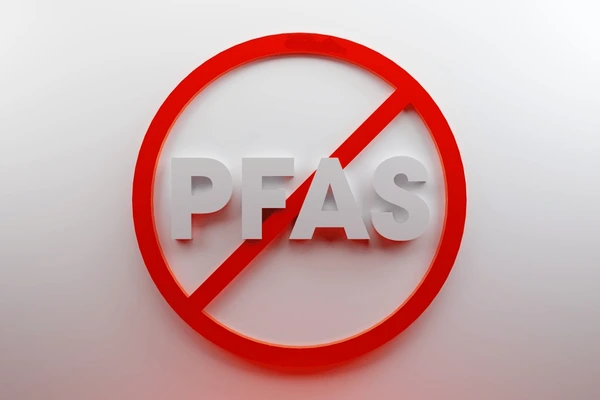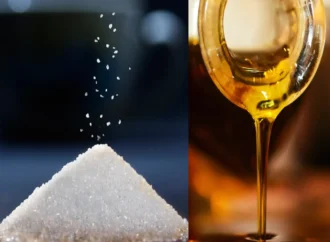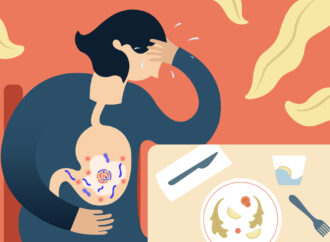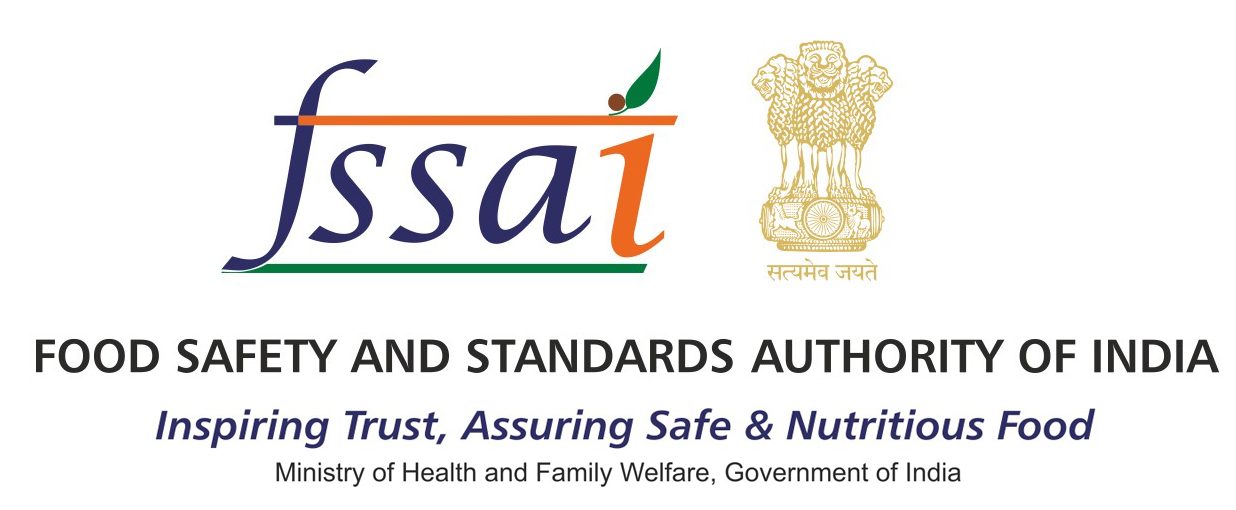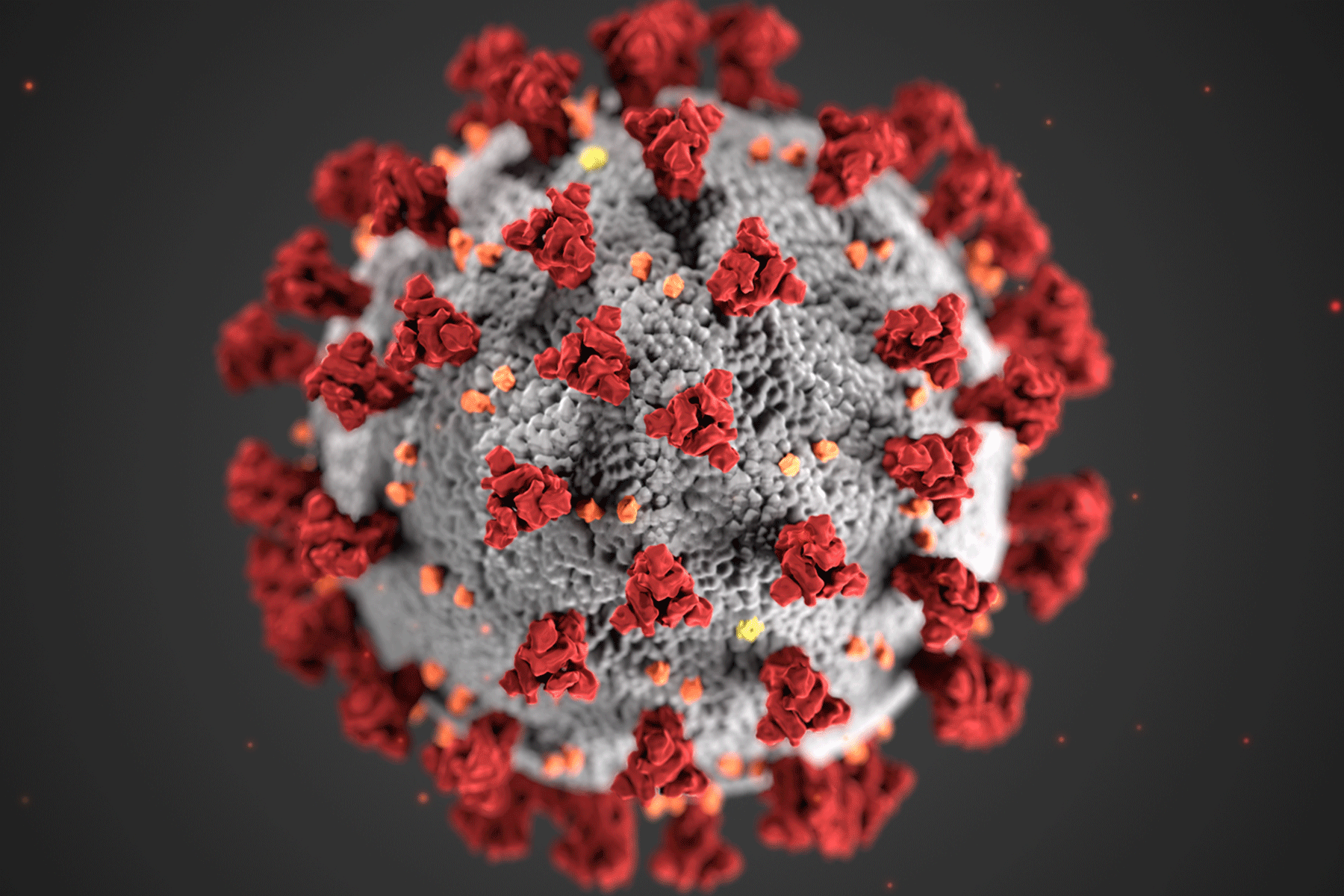PFAS, often called “forever chemicals,” are synthetic substances that have become deeply embedded in our daily lives. From the non-stick cookware in our kitchens to the food packaging we use every day, these chemicals are virtually everywhere. However, their convenience comes with a hidden cost—PFAS pose serious health risks, accumulating in our bodies and the environment over time. As awareness grows about their persistent nature and toxic effects, we must understand how they enter our food supply and take steps to limit our exposure. Let’s explore the dangers of PFAS and what we can do to protect ourselves and our planet.
What is PFAS?
PFAS (Per- and polyfluoroalkyl substances) are a group of human-made chemicals that resist water, oil, and heat. Since the 1940s, manufacturers have used these chemicals in various consumer products, industrial applications, and firefighting foams. With over 10,000 different types of PFAS, we commonly find them in everyday items like non-stick cookware, water-resistant clothing, food packaging, and cleaning products.
The most concerning aspect of PFAS is their persistence in both the environment and human bodies. These chemicals do not break down easily, earning them the nickname “forever chemicals.” Once released, they contaminate water sources, soil, and wildlife. Studies show that PFAS accumulate in nearly every person’s blood worldwide, and they persist in the body over time without leaving.
Due to their widespread use and persistence, PFAS raise significant health and environmental concerns, prompting research and actions to limit exposure.
How Are PFAS or Forever Chemicals Used?
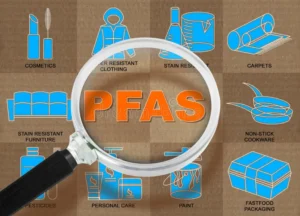
Manufacturers use PFAS chemicals in many consumer products, including:
- Food Packaging: They use PFAS in paper and cardboard packaging, like takeaway containers, pizza boxes, and popcorn bags, to make them water- and grease-resistant.
- Cookware: Non-stick cookware contains PFAS to prevent food from sticking to surfaces.
- Textiles: Manufacturers add PFAS to waterproof clothing, carpets, mattresses, and outdoor gear to increase durability.
- Cosmetics: Beauty products, such as hair conditioners, sunscreen, and foundation creams, contain PFAS for their water- and oil-resistant properties.
- Electronics: Electronics, like smartphones, incorporate PFAS for water- and oil resistance.
Although these chemicals serve practical purposes, they raise significant health and environmental concerns due to their persistence and toxicity.
Health Hazards of PFAS
PFAS exposure has been linked to several health risks. These include:
- Endocrine Disruption: PFAS chemicals interfere with the hormonal system, potentially causing reproductive issues and developmental problems in children.
- Cancer: Certain PFAS chemicals, such as PFOA and PFOS, have been linked to cancers, including kidney and testicular cancer.
- Immune System Suppression: PFAS exposure weakens immune responses, making individuals more vulnerable to infections and less responsive to vaccines.
- Thyroid and Liver Issues: PFAS exposure can result in thyroid disease, liver damage, and other metabolic problems.
- Fertility Problems: PFAS reduce fertility in both men and women and may lead to complications during pregnancy.
These risks emphasize the importance of taking steps to reduce PFAS exposure and protect our health.
How Does PFAS Enter Our Food Supply?
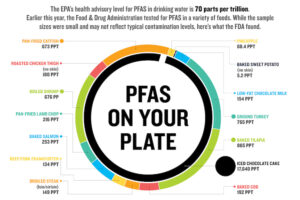
PFAS are pervasive in the environment, and their persistence and mobility make them a growing concern for food safety. Here’s how PFAS can enter the food we eat:
Food Packaging
Manufacturers use PFAS chemicals in packaging to resist water and grease. These chemicals can leach into food, particularly when the packaging comes into contact with hot or greasy items. Studies have found PFAS in disposable food packaging from fast-food chains and supermarkets worldwide.
Pesticides and Fertilizers
Some pesticides and fertilizers contain PFAS. A study found that 14% of active ingredients in pesticides include PFAS, potentially contaminating crops. Additionally, sewage sludge used as fertilizer often contains high levels of PFAS.
Water
PFAS contamination in water sources is a significant route of exposure. Many water treatment plants struggle to remove these chemicals, allowing contaminated water to affect crops, livestock, and, ultimately, human food sources.
Animal Products
PFAS accumulate in the food chain, particularly in animal products like eggs, dairy, and meat. Studies have shown higher PFAS levels in individuals who frequently consume these foods, suggesting they may be a source of exposure.
These pathways highlight how easily PFAS can infiltrate the food supply, underscoring the need for greater awareness and action.
What Can We Do About PFAS?
Given the health risks posed by PFAS, it’s essential to take steps to minimize exposure. While complete avoidance may not be possible, here are practical actions we can take:
- Advocate for Stricter Regulations: Governments and organizations worldwide are pushing for stronger regulations on PFAS. Advocating for laws to limit their use and clean up contaminated sites is critical.
- Support PFAS-Free Products: Choose PFAS-free products, including cookware, food packaging, and clothing. Many companies now offer alternatives free from these chemicals.
- Use Water Filters: If you live in an area with PFAS-contaminated water, consider using filters designed to remove these chemicals. Activated carbon and reverse osmosis systems are effective options.
- Stay Informed: Stay updated on new research about PFAS and its impact on health, food safety, and the environment. This knowledge will help you make better decisions when choosing products.
By making informed choices and advocating for change, we can reduce exposure and drive positive action at both the consumer and policy levels.
Conclusion
PFAS, the “forever chemicals,” have infiltrated nearly every aspect of our lives, from cookware and food packaging to our drinking water, posing serious risks to human health and the environment. These chemicals persist in our bodies and the environment, accumulating over time and contributing to serious health problems such as cancer, immune suppression, and fertility issues. While we may not be able to eliminate PFAS exposure, we can take action to minimize it. Choosing PFAS-free products, advocating for stricter regulations, using water filters, and staying informed are all key steps in reducing exposure. By acting now, we can help protect our health, safeguard future generations, and preserve the environment.
 Food Manifest
Food Manifest 